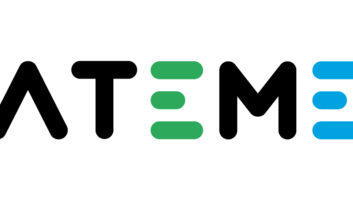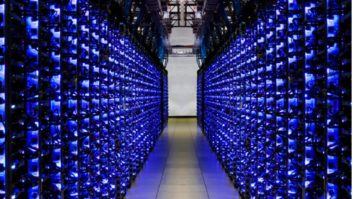The media and entertainment industry is uniquely positioned to influence public perception and inspire change, and as a result, it’s essential that the sector focuses on and actively promotes environmental sustainability. By demonstrating a strong commitment to sustainable practices and utilising cutting-edge green technologies, the industry can not only reduce its own carbon footprint but also inspire other industries to raise their game.
To understand how and where progress is being made, TVBEurope asked some key figures within the industry to explain their approach to sustainability and which initiatives are helping them make a positive impact.
Remote production boosts sustainability and drives financial benefits
“The pandemic introduced remote production with fewer people and trucks sent to an event producing sustainability and financial side benefits,” states John Wastcoat, SVP alliances and marketing at Zixi.
“We’ve introduced electric vehicles, biodiesel/hydrogen-powered generators, plant-based catering and increased remote functions. We’ve moved 24/7-powered production control rooms, whether in use or not, to the cloud on an as-needed basis using virtualised workflows that save energy.
“Several years ago, it was common to provide data throughput of 100Mb/s per computer core, but we’ve undertaken some innovative engineering to take this up to 1Gb/s in the latest version of Zixi software,” adds Wastcoat.
Recent industry data from the DPP suggests that while sustainability is still a target, implementation is driven by ROI. If it delivers economic benefits, it will be actioned; if it doesn’t, it won’t.
“Initiatives such as our work with CPU throughput and re-architecting cloud workflows for greater efficiency ticks both boxes,” adds Wastcoat, “allowing organisations to save costs and be greener simultaneously.”
Intelligent overlays revolutionise live content
“Sustainability is one of Singular.live’s core values; it was at the heart of our conception as a platform that dramatically lowers emissions by eliminating the need for dedicated hardware and transportation,” comments Mike Ward, head of marketing at Singular.live.
“We are revolutionising live content with Intelligent Overlays – a more sustainable and accessible way of adding graphics to live productions,” he continues. “Since our platform is natively browser-based, this not only fulfils the goals of live sports production teams needing to pivot to remote distributed workflows but also helps outside broadcasts deliver on carbon reduction targets. We empower broadcasters to deliver graphics without the need to invest in expensive infrastructure, additional studio space, large production teams or any shipping costs.”
Ward adds: “Recently, we launched our uno product that provides a lower-cost, easier-to-use version of Singular to open it up to a broader audience to give even more people access to the tools via a lost-cost model.”
Delivering low-energy, sustainable streaming
“We are proud members of Greening of Streaming and we are chairing the compression working group, which is helping to shape the Low Energy Sustainable Streaming (LESS) Accord recommendations that will aim to help services reduce end-to-end energy consumption, “ says Fabio Murra, SVP product and marketing at V-Nova.
“LCEVC is proven to reduce transcoding compute requirements by up to 3x in many configurations, but there are a range of technologies, both compression and otherwise, which must be considered as part of a complete system to ensure that improving one element of a workflow does not have unforeseen negative consequences elsewhere.
“We are committed to working with our colleagues in GoS, along with customers and partners, to better understand the effects of these technologies and to continue refining them to help move us all towards more sustainable video delivery,” states Murra.
Committing to sustainable operations and cloud workflows
“In order to minimise our impact, we continuously monitor various aspects of our operations, including reusing and recycling, reducing water and power consumption, and purchasing materials and resources that come from renewable sources whenever possible. We also support our live systems as long as possible well beyond the usual depreciation period,” explains Pebble’s director of sales and marketing, Alison Pavitt. “Moreover, our customers using Pebble solutions for hybrid cloud workflows benefit from the environmental economies of scale provided by cloud providers.
“In recognition of our sustainable practices, we received the DPP Committed to Sustainability Mark in May 2021. Our commitment to reducing our carbon footprint, minimising waste, and promoting sustainable practices will remain a top priority for us. As we continue to grow, we will integrate more sustainable procedures into our business model and encourage our stakeholders to do the same.”
Balancing streaming efficiency with carbon footprint reduction
Remi Beaudouin, chief strategy officer at Ateme, believes the industry is increasingly aware of the need to reduce its carbon footprint. In 2021 Ateme was one of several companies that worked together to create Greening of Streaming – a forum to share best practices for reducing the energy consumption of streaming.
“The challenge is to balance energy consumption with quality of experience,” he says. “Companies are harnessing new technologies to do that: more efficient codecs that reduce bandwidth and storage requirements; the cloud, which enables shared resources and peak offloading, so you avoid over-investing in unused over-capacity; and the new possibilities brought by 5G networks.
Beaudouin believes the next frontier involves end-to-end efficiencies. “One example is Ateme’s audience-aware streaming solution, where the CDN links back to the encoder with data on which profiles are actually being used,” he adds. “The encoder then adapts by optimising the ABR ladder – reducing power, bandwidth, and storage consumption overall.”
Minimising environmental impact through hyperconverged tech
“We recognize the role technology plays in helping to reduce the environmental impact of media production,” explains Alun Fryer, technical marketing lead – Hyperconverged Solutions at Ross Video. “One way we are addressing sustainability is through our focus on developing Hyperconverged solutions. Much like a mobile phone, which integrates many functions including cameras, GPS, and calendars, a Hyperconverged system can merge routing, multiviewers, signal processing, video production, and more into a single integrated platform. This reduces the number of physical devices required, which in turn reduces the energy consumption for the solution and associated cooling.
Ross is committed to incorporating sustainability into our technology: “By leveraging hyperconverged systems, we help customers become more sustainable by reducing their environmental and equipment footprints while also simultaneously improving their operations,” says Fryer. “Working together, our industry can make meaningful progress toward a more sustainable future.”
Embracing the circular economy
“At d&b, our commitment to providing benefits for our customers and the environment is ingrained in the collective conscientiousness of every co-worker,” comments Robert Trebus, director sustainability at d&b. “However, what sets us apart is our Certified Pre-Owned (CPO) programme from d&b audiotechnik, which gives a second life to our loudspeakers and delivers premium sound quality with a drastically reduced carbon footprint through the process of remanufacturing.”
“Before changing ownership, our loudspeakers are meticulously dismantled, tested, renovated and certified by d&b technicians to meet original factory quality standards,” he continues. “Our Certified Pre-Owned systems include new amplification and electronics, as well as all the same accessories, service, finance, and support advantages as brand new systems. Additionally, with a two-year warranty on remanufactured parts, our customers know they have made a sustainable and cost-effective investment.
By offering a CPO programme, Trebus believes d&b is taking an important step towards a circular economy and lifetime extension of its products: “Reducing waste, the CO2 footprint and minimising our environmental impact,” he explains.







